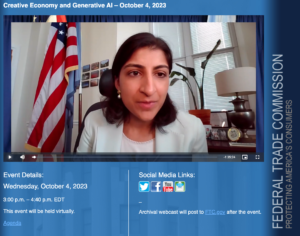Digital Millennium Copyright Act
The growth of digital media led to the December 1996 international convention on copyright protections under the World Intellectual Property Organization (WIPO is the agency that enforces the Berne Convention). The US joined digital copyright enforcement with the DMCA, passed unanimously by the US Congress in 1998.
The WIPO copyright treaty, and the DMCA, extend copyright protections into the digital realm on a consistent international basis and provide an ongoing mechanism for rule making.
While the DMCA does limit the liability of online service providers (in line with Section 230), it has a unique “notice and takedown” provision for copyright enforcement through online services. This exemption was adopted by the European Union in 2000.
Sidebar: Using the DMCA to defend Pepe

Pepe the Frog
Ohio cartoonist Matt Furie was fed up. The “alt-right” had stolen his creation, Pepe the Frog, and turned it into an icon of hatred and white power. So, in the summer and fall of 2017, his attorneys began sending a series of cease-and-desist letters to people on the far right who were infringing his copyright. They also issued Digital Millennium Copyright Act takedown requests to Reddit and Amazon, notifying them that the use of Pepe by the alt-right on their platforms is copyright infringement, and that they would have to start taking down posts and books that misused the icon. “The message is to the alt-right is clear—stop using Pepe the Frog or prepare for legal consequences,” said Motherboard magazine.
In 2018, the extremist right-wing Infowars site claimed that Pepe was really a derivative of “El Sapo Pepe” of Argentina. Since El Sapo is a distinctly different looking children’s cartoon created in 1988, the courts did not find this argument convincing, and, facing a likely loss, Infowars settled the case in June, 2019 with a $15,000 out-of-court settlement in his favor. Louis Tompros, Furie’s lawyer, told the Washington Post: “The goal of this was not really about making money and certainly not about going after Alex Jones … The goal is to make sure the use of Pepe in association with hateful images and ideas stops.”
In the fall of 2019, pro-democracy demonstrators in Hong Kong adopted Pepe without the right-wing context found in the US. Furie was happy. “Pepe for the people,” he said. Furie’s letters and DMCA takedown requests are standard legal tools available for artists who try to maintain rights to their creations.
Also around 2016, New York cartoonist Sarah Anderson noticed that her cartoons were being stolen by the same kind of folks who were misappropriating Matt Furie’s work. She wrote about her concerns in December 2022 article in the New York Times: “The alt-right manipulated my comic, and then AI took it.” Anderson’s comics are available at Tapas Comics.
Background on copyright cases and digital technologies
Over time, courts have tended to increase enforcement of copyright laws, in part because of the way new digital technologies have allowed multiple generations of copies to be produced at the same quality level as the original. The baseline case was Sony, 1984, involving video cassette recorders (VCR). The recording devices were allowed for home video recording. But similar devices and circumventions of copyright protections were not allowed in the MGM case 20 years later.
** Sony v. Universal City Studios, 1984. Universal sued to block the spread of Sony VCRs. The Supreme Court said that even though 100 percent of the material was often copied, the purpose of its use was legitimate if it was non-commercial “time shifting” for home viewing. This ruling was central to the arguments in A & M v. Napster.
** A&M Records v. Napster, 239 F.23d 1004 (9th Cir. 2001) –Time shifting as per Sony v. Universal City not valid when dissemination was deliberately widespread. MP3.com and Kazaa also embroiled in legal disputes over music sharing. More on P2P networks and their legal problems at this Wired archive site.
** MGM Studios Inc. v. Grokster Ltd. 125 US 2764, 2005 — File sharing systems allow contributory copyright infringement when their principal object is the dissemination of copyrighted material to people who post or download music files. One who distributes a device with the object of promoting its use to infringe copyright, as shown by clear expression or other affirmative steps taken to foster infringement, going beyond mere distribution with knowledge of third-party action, is liable for the resulting acts of infringement by third parties using the device, regardless of the device’s lawful uses.
Stuck between the Sony rule and the problems presented by new P2P software, the court developed a theory of secondary liability for copyright infringement – the Inducement Theory. Some thought that this wasn’t needed, and that the Sony rule could have allowed courts to consider evidence of intent.
The Inducement Test states that one who distributes a device with the object of promoting its use to infringe copyright, as shown by clear expression or other affirmative steps taken to foster infringement, is liable for the resulting acts of infringement by third parties. The court goes to great pains to stress that the inducement rule premises liability on purposeful, culpable expression and conduct, and thus does nothing to compromise legitimate commerce or discourage innovation having a lawful promise.
Copyright and Artificial Intelligence

Federal Trade Commission Chair Lena Khan starts off an FTC roundtable web discussion on artificial intelligence and copyright.
When artificial intelligence went public in 2022 – 23, the possibilities were not clear. However, one of the concerns has been that AI uses “large language models had to train on content scraped from the web — without the consent of artists and writers. One Author’s Guild lawsuit for copyright infringement was filed Sept. 23 (brief here).
Another LLM lawsuit filed by the New York Times in December 2023 also alleges that LLMs training on Times news articles violate the newspaper’s copyright. See Times articles here, here and the Verge here. The actual complaint of Dec. 27 can be seen here.
AI companies say their datasets and models are protected by the “fair use” exception to copyright law, according to an October, 2023 Columbia Journalism Review article,
 Can AI images be copyrighted? Another issue involves whether the question of whether copyright covers images generated by AI. In a December, 2023 decision, the US Copyright Office said that such images are “classic” examples of derivative works not covered by copyright.
Can AI images be copyrighted? Another issue involves whether the question of whether copyright covers images generated by AI. In a December, 2023 decision, the US Copyright Office said that such images are “classic” examples of derivative works not covered by copyright.
Generative AI presents a unique set of opportunities and challenges to creative industries, said FTC Commission chair Lena Khan in a roundtable discussion Oct. 3, 2023 (transcript here). One significant point, she noted: “All of the laws that already prohibit unfair methods of competition or collusion or discrimination or deception — all of those laws still entirely apply” (to AI).
Also see
Copyright office statement on AI, November 2023
COPYRIGHT AND GAMES
Extra Credits video (right) discusses the impact of copyright laws on video game production.
